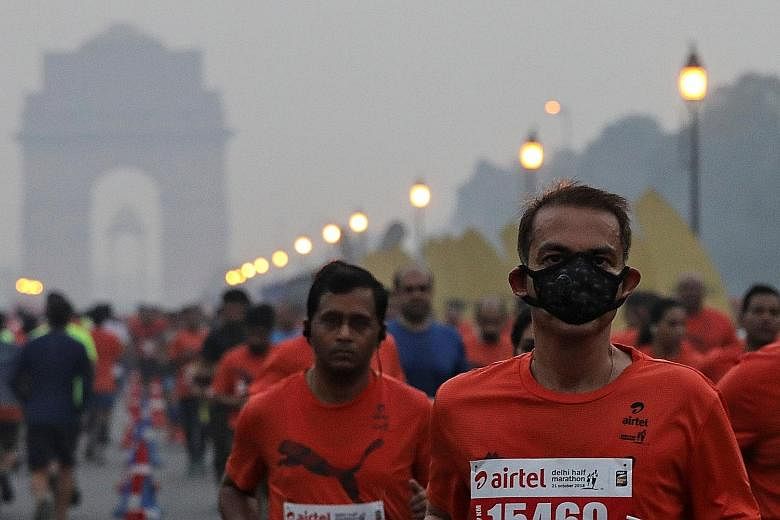NEW DELHI • New Delhi's half-marathon race used ultra high frequency (UHF) radio waves to clear the air for the runners yesterday, an experimental technique the organisers hope could improve the city's notorious air quality.
India is home to the world's 14 most polluted cities.
Last year, the smoke from burning crop waste and thousands of firecrackers contributed to a toxic smog that blanketed the capital of New Delhi and a large part of northern India.
Delhi Chief Minister Arvind Kejriwal warned that New Delhi would face the same fate this year if Prime Minister Narendra Modi's ruling Bharatiya Janata Party did not do more to combat pollution.
After medical experts urged the cancelling of last year's race, marathon organisers responded by bringing the race date forward to this month, away from November's Diwali (Deepavali) festival when the firecrackers are set off.
They also tried to dampen down the dust that hangs over the city in winter, including dropping water vapour along the course from a height of 6m. The techniques also included using the UHF waves to dispel pollution from particulate matter measuring only 2.5 microns, known as PM2.5, whose small size - about 30 times smaller than the width of a human hair - allows it to lodge deep in the lungs, damaging the respiratory system.
"It was a great day with clear skies and no pollution-related incidents among our 35,000 runners," managing director Vivek Singh of race promoter Procam International told Reuters.
He said the Delhi government, which last year resorted to shutting power stations and banning some cars from roads to clear the air, should look at using the UHF technology, manufactured by Bangalore-based company Devic Earth, to mitigate pollution.
"We have shown that it works and made a point to tell the authorities," he added.
Pictures of the event, which began at 5am, showed relatively clear skies, with the early morning sun visible through a slight haze. "I did doubt signing up, but it was just the usual morning haze and didn't feel hard to run in," said Ms Emily Jackson, a British carbon market analyst living in New Delhi.
Mr Singh said the measures had reduced pollution by at least 30 per cent during the race, though air quality at monitoring stations near the route was still rated as "very unhealthy" under global standards.
The women's race was won by Ethiopian Tsehay Gemechu in a course-record time of 1hr 6min 50sec, while teenage compatriot Andamalak Belihu won the men's race with a time of 59min 18sec.
REUTERS

